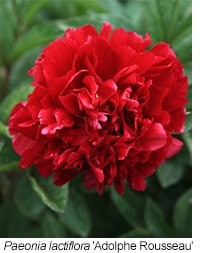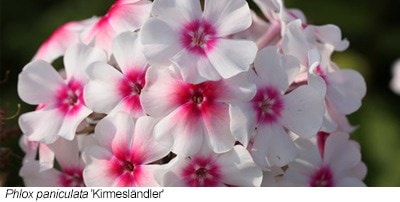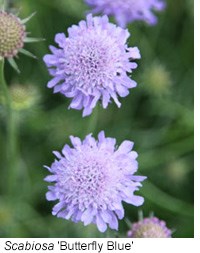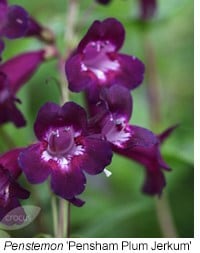At some stage in June, your garden will be a glorious affair full of scent and soft flower. Placing a posy from the garden, close to a family hub like the kitchen table, unites your home and garden as effectively as having a huge picture window. You don’t have to be a serious flower arranger either. All it takes is a simple jug, or small vase of well-chosen plants carefully harvested so that your garden hardly notices. If you have a larger garden, it’s well worth creating a designated cutting garden specially for picking perennials, bulbous plants and annuals in country house style. Your cutting garden could have wicker edges, or obelisks at each corner, or a simple picket fence should you wish. If you have a smaller garden you can still snip away, but never denude your plants because garden flowers last much longer than cut flowers.
Cut the flowers in the morning if you can, as early as possible, and immediately immerse each stem in a bucket of cool water up to its neck and then stand them in a shady place and let them drink for a few hours. Soft stems need a diagonal cut with sharp scissors to increase the surface area of stem and help the uptake of water. Woody stems need distressing, with a small hammer or similar. When arranging, don’t allow any foliage to linger below the waterline, it will green up the water as it decomposes killing the flowers. It will also smell. Change the water regularly, or top it up. Refresh the flowers by taking them out of the container and discard any spent flowers. Recut the stems of those that will do a little longer. Shake each flower so that it sheds any debris and then rearrange.
Perennials can be bedded out in straight lines in a dedicated cutting garden, with wide paths between for access. Once planted they can be left to their own devices and generally won’t need division. They can be arranged by height, but certain perennials (such as pinks, agapanthus and alstroemerias) need to be at the front in full sun. Leave a space behind the sun lovers for annuals, bulbous plants and tenders such as dahlias.
 Paeonia lactiflora varieties were bred mainly in France for cut flowers in the mid-19th century. The blooms need to be picked at the marshmallow stage, just as the bud opens to the size of an average marshmallow. The bud should be opening slightly and feel spongy to the touch. Picked like this, the flowers will open in water and last for 14 days or more. ‘Sarah Bernhardt’ is the classic pink peony for cutting, although it will need staking - see last years June Musings for more info about peonies. Peonies are very hardy but they enjoy winter chill: this provokes the flower buds and that’s why they’re planted shallowly so that the tubers lie only two inches below the soil. That way they feel the cold.
Paeonia lactiflora varieties were bred mainly in France for cut flowers in the mid-19th century. The blooms need to be picked at the marshmallow stage, just as the bud opens to the size of an average marshmallow. The bud should be opening slightly and feel spongy to the touch. Picked like this, the flowers will open in water and last for 14 days or more. ‘Sarah Bernhardt’ is the classic pink peony for cutting, although it will need staking - see last years June Musings for more info about peonies. Peonies are very hardy but they enjoy winter chill: this provokes the flower buds and that’s why they’re planted shallowly so that the tubers lie only two inches below the soil. That way they feel the cold.
Frothy Flowers for Fillers
 It’s always a good thing to have frothy plants as fillers. The two most widely used perennials are Alchemilla mollis, the lime-green starry plant, and the white or pale-pink gypsophila. Alchemilla mollis is a floppy front of the border plant that needs to be deadheaded straight after flowering because it self seeds too efficiently. However in a vase with sweet peas, it cannot be beaten. It is also the perfect partner for the tall Cephalaria gigantea, a six-foot high scabious with black-patterned buds and primrose-yellow flowers in May. Some of the daintier umbellifers are also excellent fillers and Cenolophium denudatum, the Baltic parsley, can be accommodated in a dull corner. You can also raise the annual or biennial Ammi majus, from seeds sown in autumn.
It’s always a good thing to have frothy plants as fillers. The two most widely used perennials are Alchemilla mollis, the lime-green starry plant, and the white or pale-pink gypsophila. Alchemilla mollis is a floppy front of the border plant that needs to be deadheaded straight after flowering because it self seeds too efficiently. However in a vase with sweet peas, it cannot be beaten. It is also the perfect partner for the tall Cephalaria gigantea, a six-foot high scabious with black-patterned buds and primrose-yellow flowers in May. Some of the daintier umbellifers are also excellent fillers and Cenolophium denudatum, the Baltic parsley, can be accommodated in a dull corner. You can also raise the annual or biennial Ammi majus, from seeds sown in autumn.
Summer Favorites

Border phloxes make great cutting plants and these fragrant Edwardian beauties flower in late-summer. They do need rich soil and they hate competition, so give them some space and feed them at least twice a year with Vitax Q4. ‘Bright Eyes’ is easy to grow, with highly scented, pale-pink flowers eyed in crimson. 'Kirmesländler' is similar with white flowers
centred in red. ‘Rembrandt’ is an excellent green-toned white. ‘Starfire’ is a strident pink-red and the black-toned young foliage is stunning long before the flowers. ‘Franz Schubert’ is also incredibly easy to grow, with lavender flowers that glow in evening light. The last to flower is usually the white, tight-headed ‘Mount Fuji’. Deadhead your phlox regularly to encourage flowering side shoots. Remove any shoots that wilt, often this is purely wind damage rather than disease. Shake the plants regularly too, so the old flowers fall off otherwise they mar the show.
 Scabious also make wonderful cut flowers and the blue-flowered forms tend to be perennial, unlike the darker flowered S. atropurpurea which can be seen off in cold winters. The domed, lavender-blue flowers of the new, fully hardy ‘Blueberry Muffin’ have a purple middle. The smaller-flowered ‘Butterfly Blue’ is a sterile hybrid that will flower all summer long. Or you might enjoy the green-tipped lavender-pink head of ‘Magic’, another new scabious. All cut well, with their long wiry stems, and all last well.
Scabious also make wonderful cut flowers and the blue-flowered forms tend to be perennial, unlike the darker flowered S. atropurpurea which can be seen off in cold winters. The domed, lavender-blue flowers of the new, fully hardy ‘Blueberry Muffin’ have a purple middle. The smaller-flowered ‘Butterfly Blue’ is a sterile hybrid that will flower all summer long. Or you might enjoy the green-tipped lavender-pink head of ‘Magic’, another new scabious. All cut well, with their long wiry stems, and all last well.
Add dianthus on the sunny edges, at the front so that they are not overshadowed. Good cutting varieties include the scented ‘Raspberry Sundae’ and the mid-pink ‘Candy Floss’ both members of the Scent First Series. To keep your pinks in flower cut away the whole stem when you deadhead, as this will promote more flower stems. Don’t simply nip off the spent flower. Cut all your plants back in September, to promote fresh growth and then the tight mounds will overwinter well and your plant will avoid becoming leggy.
Alstroemerias are possibly the longest-lasting flower of all, but they need a warm situation to flower well. The Planet Series reaches almost three feet high and ‘Cahors’ is almost rose-madder, but with custard-yellow petals feathered in brown. ‘Sirius’ is a much brighter pink, with less yellow, and ‘Rivale’ is an understated blush-white with purple-brown markings to alternate petals. When planting alstroemerias try to get them in the ground in summer, because they need to establish roots before winter arrives. As the plants mature they plunge deeper into the ground, rather like species tulips. Once the roots have gone deep alstroemerias survive well, but the hard thing is nurturing them for their first couple of years. A thick layer of mulch during winter helps, but do clear it away in early spring because the great enemy of the alstroemeria is the slug. When picking, or deadheading, pluck the alstroemeria stems from the base to promote new growth from the meristem. Never cut them.
Late Summer Cutting Flowers
 Penstemons and asters are both good in a vase. ‘Sour Grapes’ a smoky mixture that hovers between blue and pink and ‘Alice Hindley’ is a smaller-flowered penstemon in the same hue. ‘Raven’ is a dramatic near-black as it name suggests. ‘Pensham Plum Jerkum’ is later to flower than many, but the open-mouthed, dark-plum flowers have great presence. Follow on with asters and ‘Little Carlow’ has clouds of lavender-blue flowers held in small red-tinted buds. ‘Harrington’s Pink’ is a September bee and butterfly pleaser, or opt for the black stems and diamond-shaped foliage of Aster divaricatus - a florist’s favourite.
Penstemons and asters are both good in a vase. ‘Sour Grapes’ a smoky mixture that hovers between blue and pink and ‘Alice Hindley’ is a smaller-flowered penstemon in the same hue. ‘Raven’ is a dramatic near-black as it name suggests. ‘Pensham Plum Jerkum’ is later to flower than many, but the open-mouthed, dark-plum flowers have great presence. Follow on with asters and ‘Little Carlow’ has clouds of lavender-blue flowers held in small red-tinted buds. ‘Harrington’s Pink’ is a September bee and butterfly pleaser, or opt for the black stems and diamond-shaped foliage of Aster divaricatus - a florist’s favourite.









